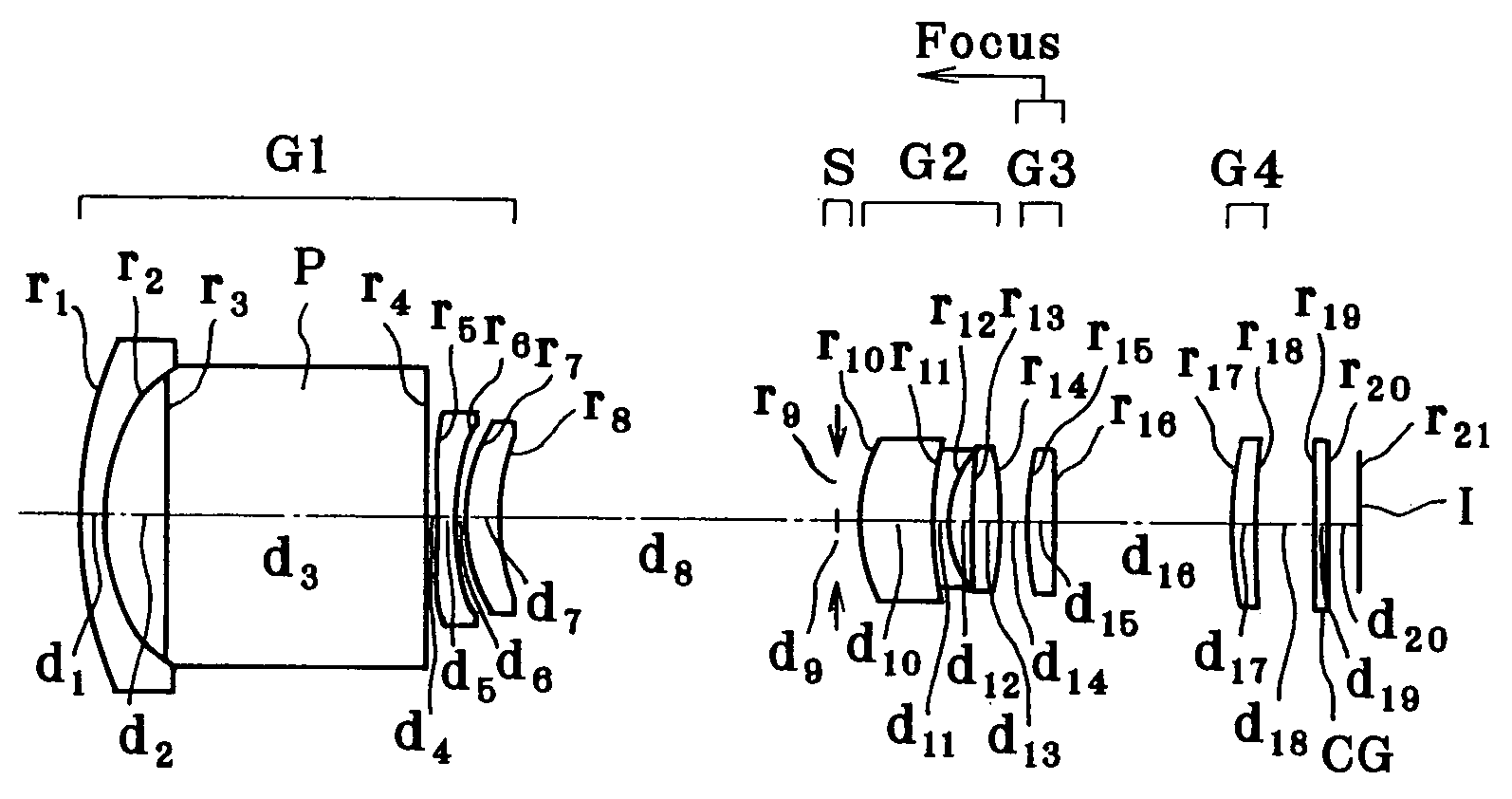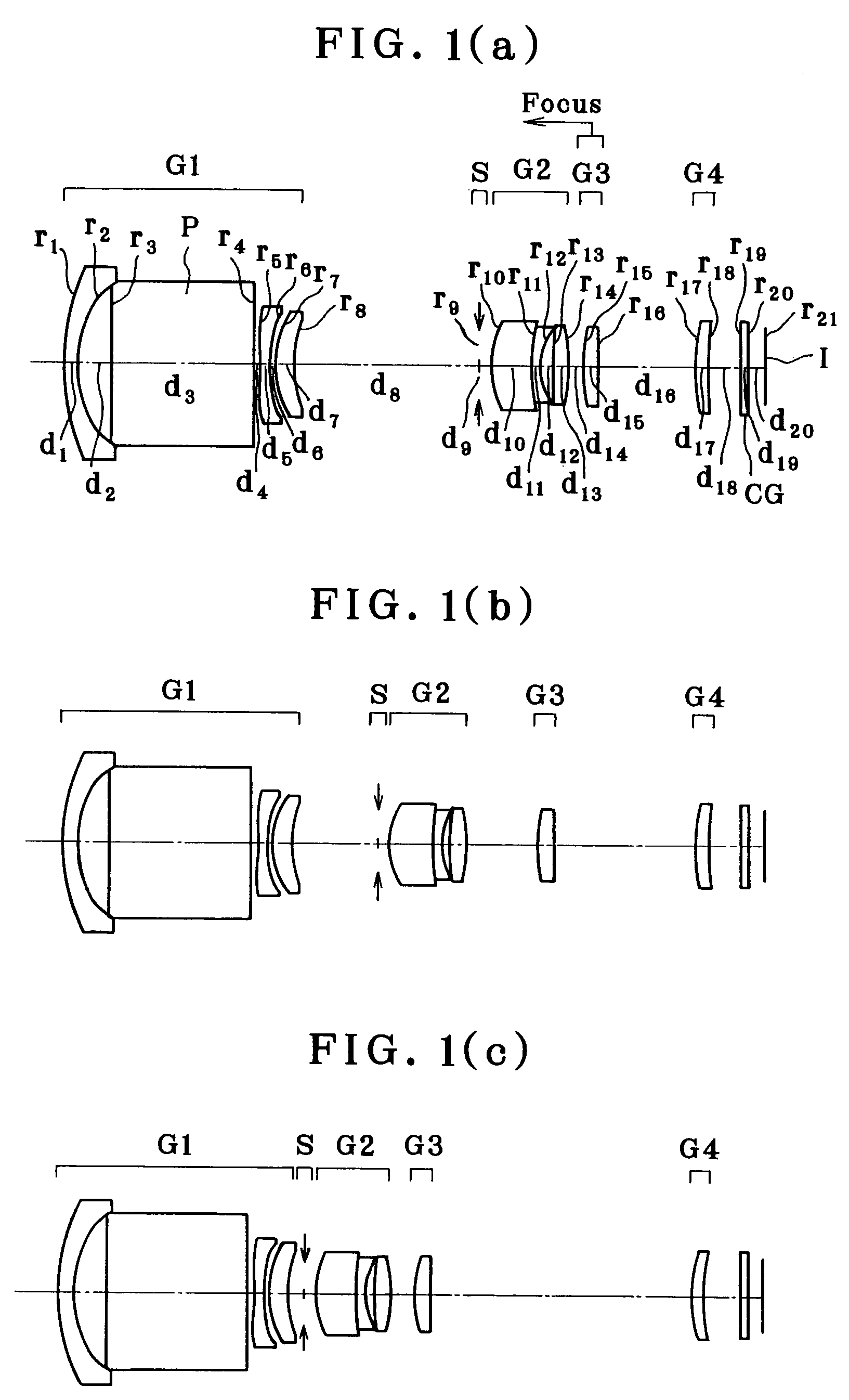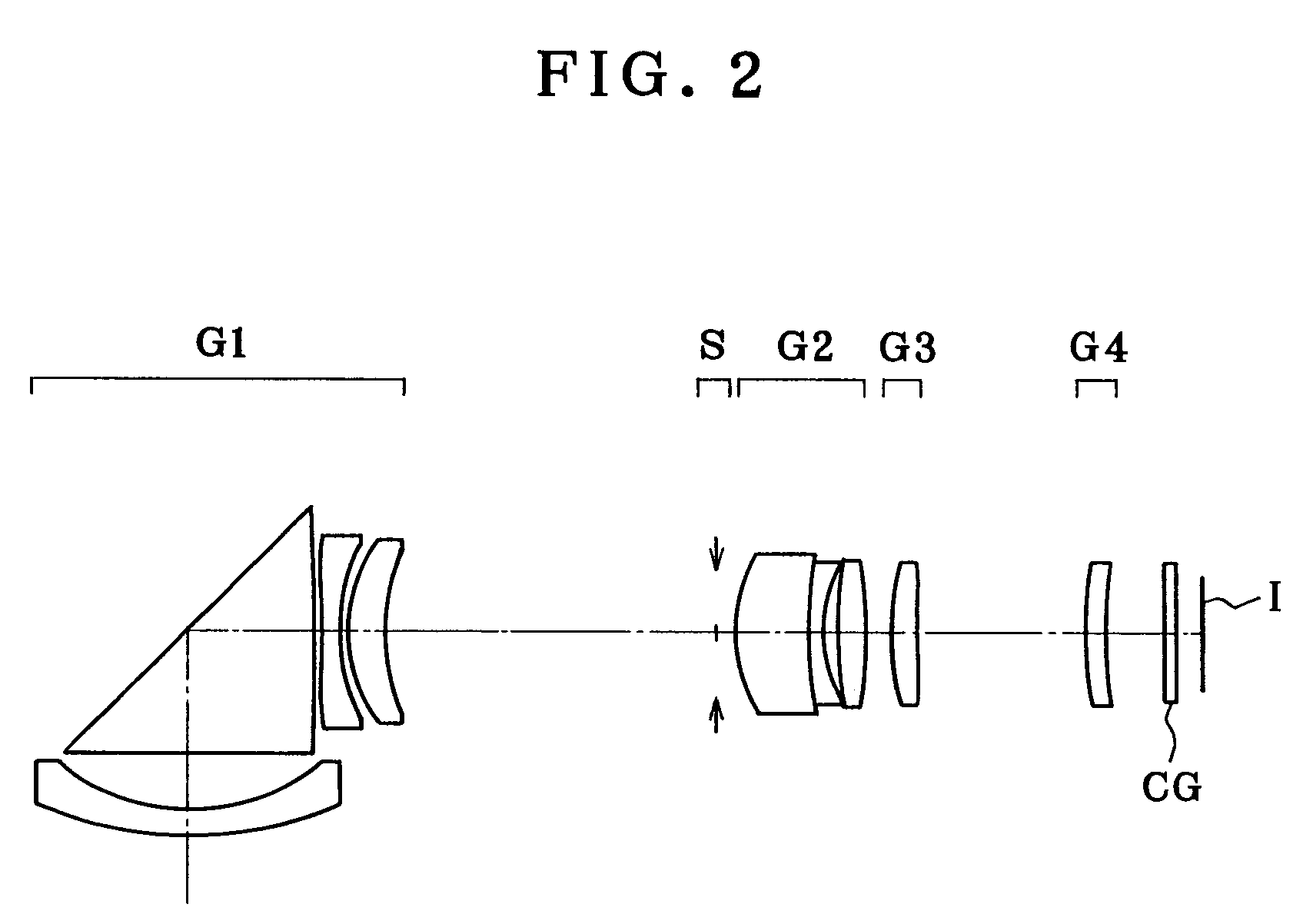Electronic imaging system
a technology of electronic imaging and optical system, applied in the field of electronic imaging system, can solve the problem of the bottleneck in reducing the depth dimension of the camera, and achieve the effects of reducing the preventing the incidence of infrared light on the image pickup plane, and reducing the length and thickness of the optical system
- Summary
- Abstract
- Description
- Claims
- Application Information
AI Technical Summary
Benefits of technology
Problems solved by technology
Method used
Image
Examples
example 1
[0077]As shown in FIGS. 1(a), 1(b) and 1(c), Example 1 is directed to a zoom lens made up of a first lens group G1 composed of a negative meniscus lens element convex on its object side, an optical path-bending prism P, a double-concave negative lens and a positive meniscus lens convex on its object side, an aperture stop S, a second lens group G2 composed of a doublet consisting of a positive meniscus lens convex on its object side and a negative meniscus lens convex on its object side and a double-convex positive lens, a third lens group G3 composed of one positive meniscus lens convex on its object side and a fourth lens group G4 composed of one positive meniscus lens convex on its object side. Upon zooming from the wide-angle end to the telephoto end of the zoom lens, the first lens group G1 and the fourth lens group G4 remain fixed, and the aperture stop S, the second lens group G2 and the third lens group G3 move toward the object side. For focusing on a nearby subject, the th...
PUM
 Login to View More
Login to View More Abstract
Description
Claims
Application Information
 Login to View More
Login to View More - R&D
- Intellectual Property
- Life Sciences
- Materials
- Tech Scout
- Unparalleled Data Quality
- Higher Quality Content
- 60% Fewer Hallucinations
Browse by: Latest US Patents, China's latest patents, Technical Efficacy Thesaurus, Application Domain, Technology Topic, Popular Technical Reports.
© 2025 PatSnap. All rights reserved.Legal|Privacy policy|Modern Slavery Act Transparency Statement|Sitemap|About US| Contact US: help@patsnap.com



